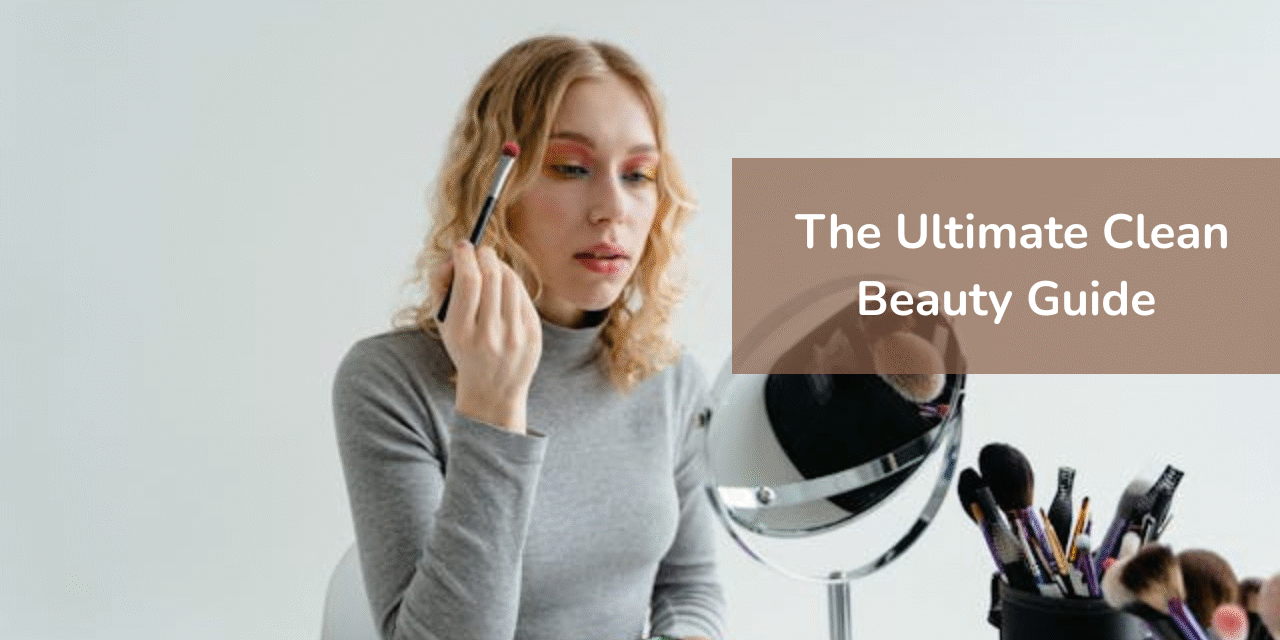By Peter N. Maina
Beauty is evolving, and so are we. Remember when beauty was all about what you could see in the mirror? A glowing complexion, lashes that reached for the stars, skin as smooth as silk. That was the goal, or so we thought. The focus used to be mainly on the visible results. If your face looked radiant, that was enough.
Today, we are no longer satisfied with products that look good on the outside. We’re asking more profound questions. Is this product safe for my body in the long run? Was it tested on animals, and what happens to it once it is flushed down the drain and enters the environment?
The tricky part is that there’s no universal definition for clean beauty. One brand’s version of clean can be very different from another’s. This guide clarifies and explains what clean beauty means, outlines the ingredients to avoid, helps you decode beauty certifications, and provides guidance on transitioning to clean products without wasting your existing ones.
1.0 What Is Clean Beauty?
Clean beauty is about the whole picture: what goes into the product, the production process, and what impact it leaves behind. At its core, it is about creating products that are safer for people and kinder to the planet without compromising effectiveness. That means:
- Protecting your health by avoiding unnecessary or potentially harmful chemicals
- Being transparent about every single ingredient, with no mysterious fragrance blends hiding dozens of unknowns
- Reducing environmental harm by choosing biodegradable, low-waste, and non-toxic options
- Supporting ethical production by treating workers fairly and refusing to test on animals
1.1 Features of Clean Beauty
Below are some aspects to consider when using clean beauty products;
Ingredient Safety
Avoid substances linked to hormone disruption, long-term toxicity, or harsh irritation.
Transparency
You should know exactly what’s in your skincare, from active ingredients to fragrance components.
Environmental Sustainability
The package includes reef-safe sunscreens, biodegradable formulas, and low-waste packaging.
Ethical Production
Cruelty-free testing, fair wages, and traceable supply chains matter as much as the product itself.
1.2 Clean vs Natural vs Organic
Many brands use these three terms interchangeably, but they are distinct. Here’s a quick breakdown:
| Term | What It Means | Watch Outs |
| Clean | Screened for safety; can include both safe synthetics and natural ingredients. | No legal definition exists; each brand sets its standards. |
| Natural | Made from plant, mineral, or animal-derived ingredients. | It can still irritate or spoil faster. |
| Organic | Grown without synthetic pesticides; certified by standards like USDA Organic or COSMOS. | It may not be 100% organic, so check the label percentage. |
Clean beauty prioritizes safety and ethics, regardless of whether an ingredient comes from nature or a laboratory.
2.0 Why Clean Beauty Matters
We use dozens of personal care products daily, including cleansers, lotions, shampoos, deodorants, lipsticks, and perfumes. Each one may contain tiny amounts of questionable ingredients. On their own, those amounts might not be alarming. But when you add them up over years of daily use, it’s worth asking if we could do better. Choosing cleaner products helps:
- Reduce your long-term exposure to unnecessary chemicals
- Support your skin’s natural health and balance
- Protect wildlife and ecosystems from harmful runoff
- Align your daily routine with your values
2.1 For Reactive or Sensitive Skin
If you have eczema, acne, or redness, you’re already familiar with the struggle of finding products that don’t exacerbate your condition. Clean beauty’s simpler formulas often skip common irritants, such as synthetic fragrance, harsh alcohols, and aggressive preservatives.
2.2 For Hormonal Health and Allergies
Scientists are studying Parabens and fragrance chemicals for their potential to disrupt hormones, which could trigger allergies in sensitive individuals. Clean beauty leans towards caution here.
2.3 For the Planet
Everything you rinse off your skin or hair ends up somewhere. Harsh surfactants, microplastics, and certain chemicals in sunscreen can harm aquatic life and coral reefs. Clean beauty aims to protect the ecosystem.
2.4 For Your Values
Many clean beauty brands avoid animal testing and support fair labour. That means your beauty buys are also a vote for a more ethical industry.
2.5 For Ingredient Literacy
When you understand labels, you stop relying on marketing fluff and start making choices based on facts. This knowledge empowers you, giving you the control to make informed decisions about the products you use.
3.0 Ingredients Worth Rethinking
These are not a “never use this” list. It’s about knowing what’s in your products and deciding if you want cleaner alternatives.
- Parabens are preservatives that some studies link to hormone disruption.
- Sulfates are strong cleansers that can strip skin and hair of natural oils.
- Fragrance can hide dozens of undisclosed chemicals, often allergens.
- Formaldehyde Donors: slow-release preservatives that may irritate skin or lungs.
- Phthalates, found in some fragrances and plastics, are linked to hormone effects in research.
- Other watch items include PEGs (potential contamination risk), petrolatum (environmental concerns), specific UV filters (reef damage), and microplastics (pollution).
4.0 What’s Worth Trusting
Certifications can help, but they’re not all equal.
- EWG VERIFIED™: Focuses on ingredient safety and full disclosure.
- Leaping Bunny: The gold standard for cruelty-free.
- USDA Organic: Ensures organic farming methods.
- COSMOS / Ecocert: European organic standard, globally recognized.
- Made Safe: Screens for toxicity to humans and the planet.
- Vegan Certified: No animal-derived ingredients
5.0 Switching Without Overwhelm
Going clean doesn’t mean tossing out your whole makeup bag at once; it is about progress, not pressure. Start with the products you use most, replace them as they run out, and keep a simple skin journal to notice how your skin responds. A gradual shift makes the process easier and keeps you consistent without stress.
Clean beauty is about mindfulness, knowing what’s in your products, how you use them, and the impact they have on the environment. With a few intentional swaps, you protect your skin from irritation, support long-term health, and build habits that highlight your natural glow.
From body lotions and facial care to lip balms, makeup, and fragrances, clean options are made with safe, non-toxic ingredients. Natural oils, plant-based moisturizers, and essential oils replace harsh chemicals, giving you hydration, protection, and gentle performance. These products keep your skin healthy, your routine simple, and your beauty choices aligned with your values.
5.1 The Clean Beauty Routine That Works
The first step in creating a clean beauty routine is to know precisely what you already have. Gather all your products in one place and check their expiration dates. Expired skincare not only loses its effectiveness but can also harm your skin, so keeping only what’s safe ensures you’re starting on the proper foundation.
Get into the habit of reading labels before you apply anything to your skin. Watch out for ingredients like parabens, sulfates, and synthetic fragrance, which can irritate or disrupt your skin’s balance. Understanding what’s inside each product gives you the power to make healthier, more conscious choices for your beauty routine.
Whenever you bring in something new, test it first on a small patch of skin. Waiting a day or two helps you catch any irritation before it spreads to the rest of your face. At the same time, avoid changing everything at once but replace products gradually, beginning with your cleanser, then your moisturizer, and finally your SPF.
Finally, remember that less is more when it comes to skincare. A simple, consistent routine will often serve you better than a shelf full of products. When you finish them, don’t just toss the packaging away; take advantage of recycling to keep beauty sustainable. By making small, mindful changes, you protect your skin while also caring for the planet.
5.2 Protect, Refresh, and Glow
Cleansing is the foundation of caring for normal skin, and a gentle sulfate-free cleanser gets the job done without stripping away natural oils. It keeps your skin feeling fresh and balanced, never tight or overly dry. Follow it up with a lightweight moisturizer that locks in hydration, keeping your skin soft and smooth all day without weighing it down.
Sun protection is non-negotiable, even if your skin feels problem-free. A mineral SPF provides that daily shield against UV rays while staying gentle and non-clogging. For an extra boost, you can add a toner or mist to refresh your skin and prepare it for moisture, especially if you like that extra step of care in your routine.
At night, your skin naturally repairs itself, so this is the perfect time to give it a little extra nourishment. A few drops of a light facial oil can top up hydration and leave your skin glowing by morning. Think of it as a simple nightly treat that supports your skin’s natural rhythm.
5.3 Hydrate and Strengthen
Cleansing should feel comforting, not harsh. That’s where cream or balm cleansers come in; they gently remove impurities while leaving behind soothing moisture, so your skin feels soft instead of tight. Follow it up with a ceramide-rich moisturizer that strengthens your skin barrier, locks in hydration, and provides a lasting cushion of comfort.
To keep your skin plump and refreshed, add a hyaluronic serum; it’s like giving your skin a big drink of water. This step smooths the look of fine lines and keeps your complexion feeling supple. You can also layer in a nourishing facial oil, which helps seal in moisture and boosts radiance over time, making your skin look and feel healthier.
And of course, never skip sunscreen. A hydrating SPF not only shields you from UV damage but also keeps your skin moisturized throughout the day. Think of it as your daily defense against dryness and the early signs of ageing, all while keeping your skin glowing.
5.4 Clean Beauty for Oil and Acne Management
- Gel or powder-to-foam cleanser: A gel or powder-to-foam cleanser provides a fresh, deep-clean feeling without being too harsh. It helps remove excess oil and buildup that can clog pores. The goal is a clear, balanced finish, not a squeaky-dry face.
- Oil-free moisturizer: Even oily skin needs hydration—skipping moisturizer can make it oilier. An oil-free formula keeps skin balanced and comfortable without adding shine. It’s lightweight, so your skin feels refreshed instead of greasy.
- Niacinamide serum: Niacinamide is a hero ingredient for oily and blemish-prone skin. It helps calm redness and reduce excess oil, and consistent use keeps skin clearer and even-toned.
- Mattifying SPF: Sunscreen is essential, but no one with oily skin wants extra shine. A mattifying SPF protects your skin from UV damage while keeping it looking smooth and less greasy. It’s like sun protection with a built-in oil-control bonus.
- Clay mask weekly: A weekly clay mask can help draw out impurities and absorb excess oil. It gives your skin a deep detox while keeping breakouts at bay. Use it once or twice a week for that clean, refreshed feeling.
5.5 Fragile Skin Needing Extra Care
- Fragrance-free cream cleanser: If you’ve got sensitive skin, fragrances can be irritating. A fragrance-free cream cleanser gently cleanses your face without stripping away natural oils, so your skin feels calm and balanced, rather than tight or itchy.
- Barrier-repair moisturizer: Think of your skin barrier as a shield. When it’s weak, your skin reacts to almost anything. A barrier-repair moisturizer helps strengthen that shield, locking in hydration and soothing irritation, so your skin can recover and stay resilient.
- Mineral SPF for sensitive skin: Sun protection is non-negotiable, but chemical sunscreens can sometimes sting or cause redness. Mineral SPF (with zinc oxide or titanium dioxide) sits on top of the skin and reflects UV rays, making it a gentler and safer option for sensitive skin.
6.0 Clean Makeup Essentials
Must-haves include tinted moisturizers or foundations with mineral SPF, cream concealer, lip or cheek multi-stick, gentle mascara, unscented brow gel or pencil, and plant-based lip balm or gloss.
Smart Tips:
- Go for refillable packaging: Refillable packaging isn’t just eco-friendly; it’s also budget-friendly. Instead of tossing out containers, you refill them, reducing plastic waste and saving money. Plus, having a sturdy, reusable container makes your beauty routine feel stylish and sustainable.
- Patch test pigmented products: Always patch test bold products, such as lipsticks or eyeshadows, before using them on your face. A quick dab on your wrist or behind your ear helps you spot any irritation or sensitivity. This small step helps prevent breakouts and keeps your skin healthy.
- Choose biodegradable, silicone-light formulas: What you rinse off eventually flows into the environment, so choose formulas that break down safely. Biodegradable, silicone-light products are kinder to ecosystems and often feel lighter on your skin. It’s a win for both your beauty routine and the planet.

Clean makeup essentials with safe, sustainable ingredients
7.0 Sustainability in Clean Beauty
Beyond ingredients, clean beauty considers eco-friendly packaging and refillable systems. Waterless formulas, ethical sourcing and low-carbon production
7.1. Myths to Leave Behind
Natural means safe; not always.
Not all synthetics are inherently harmful; some lab-made ingredients are safer than their natural counterparts.
Clean beauty can’t fix everything; your skin’s health depends on factors such as sleep, diet, stress, and environment.
Your beauty routine is more than skin deep; it’s a reflection of your health, values, and the planet you care about. Start your clean beauty journey today with P$M beauty products. Swap one product, read one label, and make one conscious choice. The ripple effect begins with you. P$M meets your expectations with products that are good for you and backed by certifications you can trust.
Visit our website to explore other articles and get all the information you need to make an informed, confident choice.








